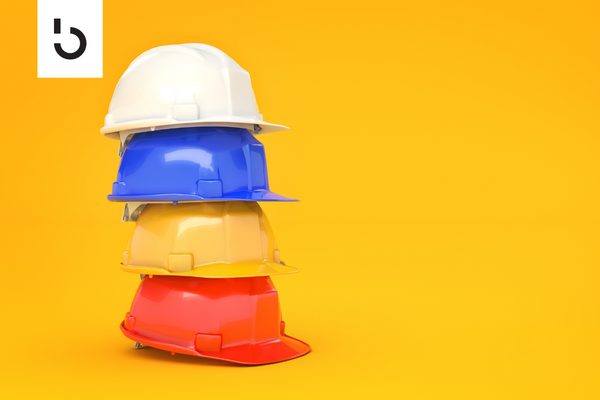
When bitcoin first appeared on the scene, bitcoin mining used the CPU (central processing unit) in any basic computer. That lasted several years until miners learned to use the more powerful GPU (graphics processing unit).
While it is still possible to mine altcoins with a GPU (or even a CPU) these days, bitcoin and most others have gone beyond accessibility for home miners. In 2023, most mining uses powerful ASIC (application-specific integrated circuit) rigs that have been created specifically for cryptocurrency mining.
Whether you’re using a CPU, GPU, or ASIC machine, what are the most profitable coins for crypto mining in 2023? Read on to find out.
Crypto Mining Profitability Changes Rapidly
One excellent resource for keeping up-to-date on profitable altcoins to mine is Coinwarz, which maintains an updated database of altcoins and the profitability of mining them.
Revenues and profits are based on optimal mining rigs for each coin, and average electricity costs in the U.S. Your mining revenues and profits may vary.
It is not likely you will get rich through mining altcoin. In today’s competitive environment, mining is a good way to understand how the blockchain works, and it can be a fun hobby with a small return.
If you get lucky, you might mine a coin that later goes to the moon, meaning your mining efforts could eventually be more profitable than you might imagine today.
8 Good Crypto Mining Choices for 2023
Below are eight of the top coins for crypto mining in 2023. Some are older coins that have remained resistant to ASIC mining. Others are new coins that have launched recently, intending to stay free from ASIC mining.
 Monero (XMR)
Monero (XMR)
Block Reward: 0.65 XMR
Block Time: 2.00 minutes
Revenue (per day): $0.62
Monero goes back and forth between profitability and small losses. Therefore, you will want to keep an eye on it to determine if it is profitable to mine at any given time.
Many early blockchain adopters like Monero because of its privacy and anonymity. It has become very popular among GPU miners because the Monero development team is committed to keeping Monero ASIC-resistant.
They are so committed to this path that they changed their consensus algorithm in 2018 in response to the release of an ASIC rig capable of mining Monero. You can be pretty confident Monero will remain accessible for home miners using a simple GPU.
 Peercoin (PPC)
Peercoin (PPC)
Block Reward: 38.82 PPC
Block Time: 10 minutes
Revenue (per day): $11.62
Launched in August 2012, Peercoin utilizes both Proof-of-Stake and Proof-of-Work systems. While Peercoin may not yet be a household name, it was the first altcoin to use the PoS system for processing transactions. This mining method requires very little energy, making Peercoin the first “green” cryptocurrency.
Peercoin was one of the top cryptocurrencies in its early years. While it’s less popular now, the coin has a dedicated and passionate development team behind it. Due to its hybrid PoS/PoW model, it’s still one of the most energy-efficient coins to mine.
 Horizen (ZEN)
Horizen (ZEN)
Block Reward: 3.75 ZEN
Block Time: 2.50 minutes
Revenue (per day): $1.34
Horizen, known as ZenCash until August 2018, is another privacy-centric altcoin.
Horizen promotes both privacy and anonymous transactions. Like Zcash, the Horizen team decided to embrace ASIC miners because it made their network more stable and secure. Even so, it remains a profitable coin for GPU crypto miners.
 Vertcoin (VTC)
Vertcoin (VTC)
Block Reward: 12.50 VTC
Block Time: 2.50 minutes
Revenue (per day): $0.45
Vertcoin considers itself “the people’s coin.” It was developed with specific properties to ensure that it remains ASIC-resistant. Its developers might be the most strongly ASIC-resistant team. Therefore, it’s likely that it will remain a good altcoin to mine using your GPU.
Vertcoin also has a unique miner created specifically to mine VTC, and it’s probably one of the easiest miners to use. Once you download and install the miner, all you need to do is join a mining pool, and you’re ready to go.
 Bitcoin Cash (BTC)
Bitcoin Cash (BTC)
Block Reward: 6.25 BCH
Block Time: 10 minutes
Revenue (per day): $8.42
Not to be confused with bitcoin, miners and developers created Bitcoin Cash in response to concerns about the future of bitcoin and its ability to scale effectively. Bitcoin Cash has its own blockchain and specifications. It also has an increased block size of 32 MB (vs. 1 MB for bitcoin) to speed up the verification process.
This means that Bitcoin Cash can process transactions more quickly than the bitcoin network, resulting in shorter wait times and lower processing fees on transactions. However, apart from block size, Bitcoin Cash comes with the same mining limitations as Bitcoin. It’s deflationary like bitcoin, meaning only 21 million coins will ever exist. It also uses the same SHA-256 hashing algorithm, with the reward halved roughly every four years.
While it used to be way more profitable to mine bitcoin, the profitability of Bitcoin Cash is catching up. And, thanks to its fast transactions and increased block size, it’s easier to mine and create transfers for lower fees.
 Ethereum Classic (ETC)
Ethereum Classic (ETC)
Block Reward: 3.20 ETC
Block Time: 15.00 seconds
Revenue (per day): $1.03
Many miners are taking refuge in Ethereum Classic since the arrival of The Merge, the software upgrade that led Ethereum from a mining-based Proof-of-Work blockchain to a more energy efficient, scalable Proof-of-Stake system.
In 2017, Ethereum Classic adopted the bitcoin way, with a fixed supply cap and ETC issuance rate. Although there’s now too much supply and not enough demand, mining Ethereum Classic can still be barely profitable for at-home miners using GPU or ASIC mining machines. However, it can’t be mined with regular CPUs.
 Dogecoin (DOGE)
Dogecoin (DOGE)
Block Reward: 10,000 DOGE
Block Time: 1 minute
Revenue (per day): $8.32
What started as a joke turned into an impressive market capitalization and powerful lesson for crypto investors and miners. Two software engineers created Dogecoin to poke fun at the wild speculation involved with cryptocurrencies.
The parody token went live in 2013 and reached mainstream popularity when Elon Musk, the CEO of Tesla, publicly endorsed it in 2019. Now, Dogecoin has a market capitalization of $21.98 billion, with over 131 million DOGE in circulation.
Mining Dogecoin became increasingly popular, in part because Musk continues to endorse it. It reached its highest revenue figures this past year, and mining is likely to remain profitable for the foreseeable future.
 Vergecoin (XVG)
Vergecoin (XVG)
Block Reward: 100.00 XVG
Block Time: 30 sec
Revenue per day: $5.41
Verge is an open-source, community-driven crypto currency that promotes complete anonymity in transactions. It is run by volunteer miners spread across the globe.
Verge, launched in 2014, was an offshoot of DogeCoin and introduced to provide anonymous private transactions similar to other privacy coins such as Monero, Pivx, and Zcash.
Verge hides users’ IP addresses and locations, making transactions untraceable. It uses multiple distributed networks such as the Onion Router (TOR) and Invisible Internet Project (I2P) that bounce communications over a network of relays and tunnels, making it impossible to trace the user’s identity or location. The I2P encrypts user data.
Verge now supports multi-algorithm mining, and one can choose either the GPU or ASIC protocol to mine.
The Verge ledger is public, and transactions can be verified, but the token network ensures that the participant’s identity is hidden. Though Verge’s use by some adult sites brought it some notoriety, it is still going strong. Verge plans to introduce a sidechain through the Rootstock project to process smart contracts.
The market capitalization of Verge at the time of this writing is around $44.63 million, with a Verge token worth $0.0026.
 Litecoin (LTC)
Litecoin (LTC)
Block reward: 12.50 LTC
Block time: 2.5 minutes
Revenue per day: $7.67
Litecoin is a pioneer in altcoins. It was introduced in 2011 by Charlie Lee, an ex-Google employee, to enable faster and cheaper blockchain-based transactions. Litecoin lit up the crypto world and saw massive adoption, reaching a market capitalization of $1 billion in 2013.
Mining Litecoins is much easier as it is done on a common GPU. Litecoin runs on the Scrypt proof-of-work algorithm, different from the ASIC (Application-Specific Integrated Circuit) setup used by bitcoin. It’s also easier to mine, and the entry barrier is low.
Litecoin was derived from bitcoin’s original source code, and Lee called it the “lite version of bitcoin”. Litecoin’s supply cap is 84 million tokens.
 Bitcoin (BTC)
Bitcoin (BTC)
Block reward: 6.52 BTC
Block time: 10 minutes
Revenue per day: $8.23
Bitcoin has become the most-recognized cryptocurrency brand. Since its inception in 2009, the cryptocurrency has lived through turbulent times while reaching phenomenal heights and a top valuation of $65,000.
Although it’s difficult to make much money without joining a mining pool, you can still earn a meager profit mining yourself, even with the cost of electricity factored in.
Bitcoin’s supply cap is 21 million, and mining rewards are halved after every 210,000 blocks. In 2009, the first reward was 50 new bitcoins; today, the reward is down to 6.25 bitcoins. The next halving is expected in 2024.
In other words, mining will get more difficult over time. If you want to get involved, it’s better to start sooner than later.

Other Altcoins to Consider for Crypto Mining
While the above altcoins are some of the most profitable to mine in 2023, other altcoins are worth considering that look to remain ASIC-resistant.
Keep an eye on RavenCoin (RVN), LiteCoin (LTC), Grin (GRIN), Metaverse (ETP), and Bitcoin Gold (BTG).
Should You Mine Bitcoin in 2023?
So, is it still profitable to mine bitcoin at home in 2023? Yes … but it isn’t easy. Contrary to popular belief, you don’t need a nuclear power plant or wind turbine to mine bitcoin these days successfully. Bitcoin mining comes with many variables, and many people find buying bitcoin on an exchange more profitable.
However, if done efficiently, one can profit from mining bitcoin in addition to buying and holding. To succeed at bitcoin mining in 2023, you’ll need to invest in efficient hardware and have access to affordable electricity.
Additionally, because the network of bitcoin mining machines is so extensive these days and your chances of regularly finding a block are so low, you’ll need to mine through a mining pool. [See our article on Best Mining Pools here.]
For more tips on building wealth with bitcoin and crypto, subscribe to our daily Bitcoin Market Journal newsletter.
- SEO Powered Content & PR Distribution. Get Amplified Today.
- Platoblockchain. Web3 Metaverse Intelligence. Knowledge Amplified. Access Here.
- Source: https://www.bitcoinmarketjournal.com/crypto-mining-most-profitable/



